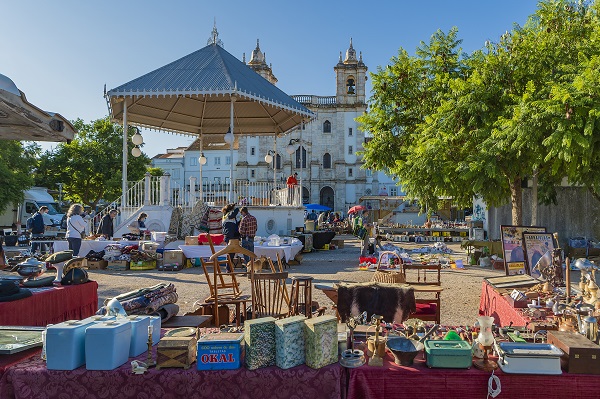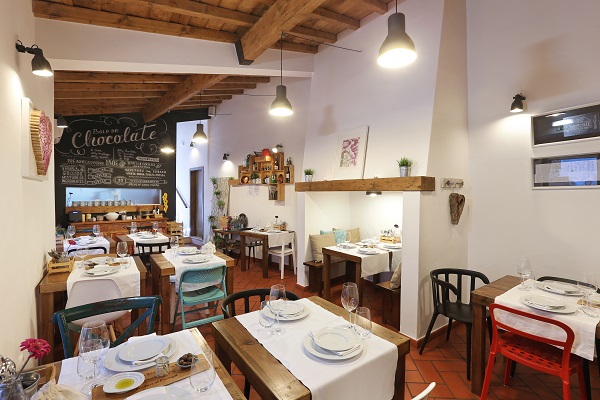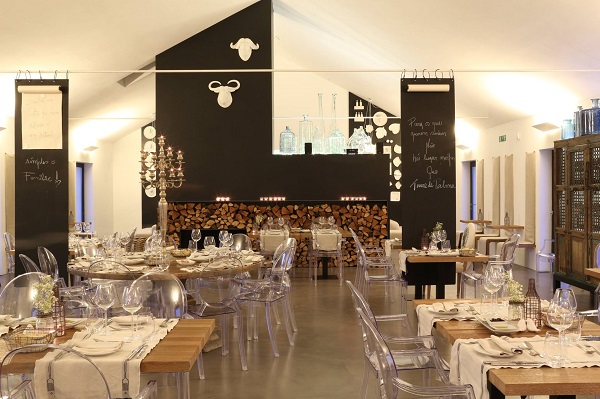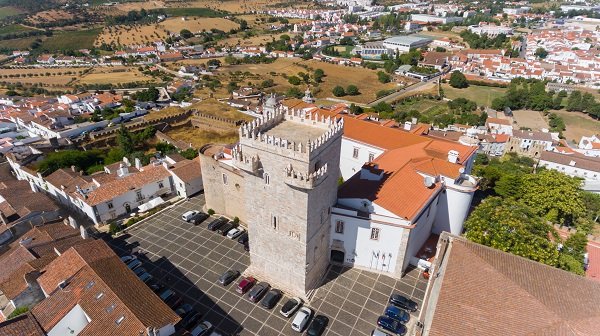Most people who visit Portugal and make to the Alentejo (which everyone should!) get to the regional capital of Évora, with its dramatic Roman ruins and haunting chapel of bones, or maybe to the rugged Vicentina coast, with its dramatic beaches and surf friendly waves. But few push as far east as Estremoz.
That’s a shame because it’s very much worth a visit. In many ways, the "white city” brims with tradition. You can see it in the massive market that takes over the central Rossio square on Saturdays. People come from all over the region to buy fruits and vegetables from local farmers, sausages and cheese from small producers, and lots of delightful, non-edible things. Along with the food market, another group of stalls is home to an antiques and handcrafts market, where you can find typical Alentejano terracotta colored ceramics, vintage jewelry and memorabilia -- and, at least when I visited -- quite a lot of beautiful blown-glass vessels.

Then there are the clay figures that the city is known for, recognized by UNESCO as an Intangible Cultural Heritage of Humanity. The Bonecas of Estremoz date from the 17th century, when they were used to represent Christian themes. Now they’re colorful and interesting, regardless of your beliefs.
And of course, Estremoz is still proud of being a center of marble production. There are quarries to the east of the city, which produce much of the marble that Portugal uses and exports. In Estremoz, the sidewalks are made partly with marble remnants from those quarries. The result is that you discover a touch of accidental luxury where you least expect it.
Along with its rich traditions, the city has a tinge of cool, thanks to an impressive new design museum celebrating azulejos (Portuguese ceramic tiles), and lovely new style-driven wineries and hotels to visit.
Let’s start with the museum. Museu Berardo Estremoz opened last year and still isn’t widely known, even among Portuguese. The municipal government collaborated with one of Portugal’s most prolific private collectors to develop the project, which occupies the historic Tocha Palace in the city center. The palace itself has beautiful late Baroque and Rococo azulejos on its interior walls (some of which depict lighthearted scenes of people canoodling or maybe just having a little too much fun), and the inaugural exhibition presents the largest private collection of tiles in the country.
It begins with the early, geometric tiles that were popular in the Islamic world and arrived in Portugal during the Moorish times. Then it moves on through gallery after gallery showing how the tiles evolved, first into representative patterns (grape leaves was a common one) in many colors and then into only blue and white (perhaps due to Portugal’s historical rivalry with that other great seafaring nation, the Netherlands). It ends up with mid-20th-century advertising, a form of marketing that I wish had endured.
Just a few doors down from the museum, Mercearia Gadanha is a shop selling regional food products and wine but also a surprising restaurant. It’s a departure from the traditional Alentejo gastronomy, with its big portions and hearty dishes. Rather, chef Michele Marques and her kitchen team turn out inventive and memorable dishes with local ingredients.
An item listed on the menu as "fantastic soup” turned out to be just that, a tomato-strawberry gazpacho with the sweetest little prawns and basil granita. The tuna tartare had a richness that was enlivened by radishes and fresh herbs, and a dish of local goat cheese, walnuts and honey nicely straddled the line between savory dish and dessert.

Some enticing new wineries have also popped up right around Estremoz. Howard’s Folly is a creative partnership between entrepreneur Howard Bilton and winemaker David Baverstock to make great wine from Portuguese varietals and give back through sponsorship of an arts-based charity.
A few years ago they opened a state-of-the-art-winery in the city center, in which they use grapes they’ve bought from local vineyards. Visitors can sample the wines in a handsome bar or enjoy lunch or dinner in the restaurant.
Another relative newcomer is Torre de Palma Wine Hotel, a family owned project that became the first five-star hotel in the region when it opened in 2014, and a producer of award-winning small batch wines, under the direction of Duarte de Deus, since 2016. There are many ways to dive deep into wine, from regular tastings to blind or barrel tastings, to blending workshops, to taking part in the harvest.
As for the hospitality side of things, the hotel is centered on a tower from 1338, but decorated with colorful, contemporary furnishings. It’s also home to many antiques that belonged to the mother of one of the owners (who was born near Estremoz but lived in another part of Portugal most of her life), which have been painted white to give them a more updated look. There’s a lot do, from horse-drawn rides around the estate and the beautiful Alentejo countryside, to treatments at the spa, to dining at the restaurant. Chef Miguel Laffan, who previously held a Michelin star at another Alentejo restaurant, recently signed on as a consultant. Like Estremoz itself, his menu puts a contemporary touch on classic Alentejano dishes, such as lamb croquettes and slow-cooked Alentejo pork with potato puree.

The other extraordinary place to stay is Dá Liçensa, a short distance from the city. The hotel is the passion project of a half-French, half-Portuguese couple who wanted to combine art and nature, traditional and contemporary, simplicity and luxury. They worked with the Estremoz architecture firm Procale to build the hotel on the remains of buildings that have existed here since the 1840s, integrating some timeworn elements and some new, sharply geometric others.
Both owners have a background in art, design, and fashion. When one of them sold his influential gallery in Paris, they brought that collection of Jugendstil (a Scandinavian form of Art Nouveau) and Anthroposophical (derived from the 20th-century philosophy or Rudolf Steiner) furniture with them.
In simplistic terms, the furniture’s style is a blend of natural forms and stylistic rigor, just like the hotel. And the hotel’s still is a blend of modernity and timeless tradition, just like Estremoz itself.
*Ann Abel is a freelance luxury travel writer with an adventurous streak: she’s flown small airplanes over three continents, and been bitten by a massage therapist. The former travel editor, she writes regularly for Forbes.com.



